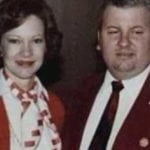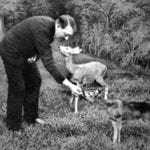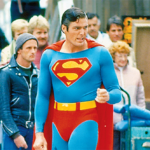 Music
Music  Music
Music  History
History 10 Less Than Jolly Events That Occurred on December 25
 Weird Stuff
Weird Stuff 10 Funny Ways That Researchers Overthink Christmas
 Politics
Politics 10 Political Scandals That Sent Crowds Into the Streets
 Weird Stuff
Weird Stuff Ten Bizarre Facts About The Doge Meme
 Our World
Our World 10 Ways Your Christmas Tree Is More Lit Than You Think
 Movies and TV
Movies and TV The 10 Coolest Stars to Set Sail on The Love Boat
 History
History 10 Things You Didn’t Know About the American National Anthem
 Technology
Technology Top 10 Everyday Tech Buzzwords That Hide a Darker Past
 Humans
Humans 10 Everyday Human Behaviors That Are Actually Survival Instincts
 Music
Music 10 Surprising Origin Stories of Your Favorite Holiday Songs
 History
History 10 Less Than Jolly Events That Occurred on December 25
 Weird Stuff
Weird Stuff 10 Funny Ways That Researchers Overthink Christmas
Who's Behind Listverse?

Jamie Frater
Head Editor
Jamie founded Listverse due to an insatiable desire to share fascinating, obscure, and bizarre facts. He has been a guest speaker on numerous national radio and television stations and is a five time published author.
More About Us Politics
Politics 10 Political Scandals That Sent Crowds Into the Streets
 Weird Stuff
Weird Stuff Ten Bizarre Facts About The Doge Meme
 Our World
Our World 10 Ways Your Christmas Tree Is More Lit Than You Think
 Movies and TV
Movies and TV The 10 Coolest Stars to Set Sail on The Love Boat
 History
History 10 Things You Didn’t Know About the American National Anthem
 Technology
Technology Top 10 Everyday Tech Buzzwords That Hide a Darker Past
 Humans
Humans 10 Everyday Human Behaviors That Are Actually Survival Instincts
10 Infamous Crime Photos
In the history of photography, there have been many pictures of crimes and criminals that have left an indelible mark on society. Regardless of the actual content, all of these pictures embody the sadness and depravity of the acts that were committed.
Warning: This list contains graphic photos that may be disturbing to some readers.
10The Mad Bomber’s Mad Smile
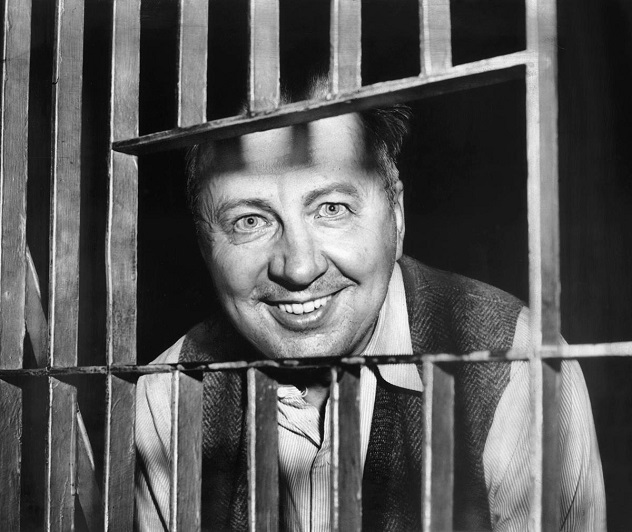
Over a span of 16 years, an unknown man simply called the “Mad Bomber” terrorized New York City. He would plant explosives in various public places like movie theaters, subway terminals, libraries, and buildings that were owned by the energy company Consolidated Edison.
In all, 33 bombs were planted and 22 of them detonated. Amazingly, only 15 people were injured. For each of the bombs, the man would call the police or newspapers stating where a bomb was planted, but he never gave the exact location. This would make for chaotic scenes as the police tried to evacuate people and simultaneously look for the bombs which were filled with gunpowder and set with a cheap pocket watch.
The police were looking for any leads, so they asked a criminologist for a profile of the bomber. The criminologist concluded that the bomber was from Eastern Europe, and that he worked for Con Edison but was probably fired for reasons he deemed unfair.
The day after the profile was published, the police printed a message to the bomber in the New York Journal American telling him to give himself up. He responded saying he would make a truce, but he still wanted to crush Con Edison. The police published his letter in the paper and released a statement of their own.
In turn, the bomber wrote a letter back in which he admitted being an injured worker. A file clerk at Con Edison looked through the files of compensation cases with disturbed individuals. Then she came across a file for a man named George Metesky who had been injured on the job. He had been fired after getting paid for 26 weeks of sick pay. When he tried to apply for more compensation because he got sick from his injury, he was denied because Con Edison claimed he filed too late.
In the file, Metesky had written words and phrases that were very similar to the published letters. The clerk told her supervisor, who in turn told the police. The police went to question Metesky before coming back with a search warrant. Once in custody, he confessed to the crimes.
After he gripped the city in fear, photographers were allowed to take pictures of the Mad Bomber in his jail cell in Waterby. The most famous picture—as seen above—was taken by New York Daily News photographer Judd Mehlman.
To the public, these pictures only solidified that Metesky was a crazy man who did crazy things. Metesky was deemed not capable of standing trial, and he lived to the age of 90 in a state hospital.
9Ricky Kasso, Teenage Satanist
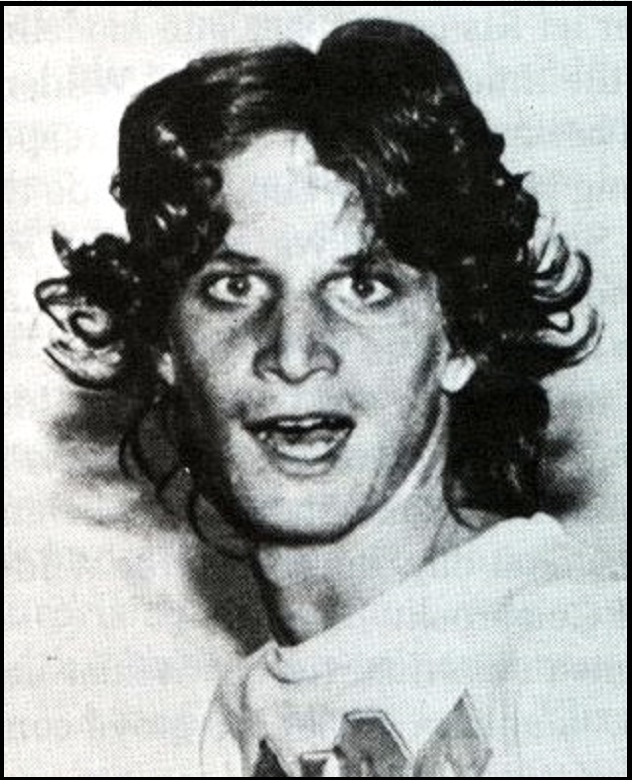
This famous picture of a young man with wild eyes and a heavy metal T-shirt was published at a time when the fear of Satanism among the young was at a fever pitch. Teenage boys and girls were becoming drug-addled Satanists all because of heavy metal. The picture of 17-year-old Ricky Kasso from Northport, Long Island, seemed to embody the evil teenager who could easily be part of your family.
The picture was taken when he was arrested for the murder of 17-year-old Gary Lauwers on July 5, 1984. Kasso was a high school dropout and spent most of his time doing drugs and partying. At one point, Lauwers and Kasso were friends, but things soured when Lauwers stole drugs from Kasso. After a few run-ins, Kasso said that he was ready to forgive him and asked Lauwers to come party with two other friends out in the woods.
While out there, they did what they claimed was mescaline. After a while, Kasso heard a crow caw, and he thought that was Satan’s way of telling him to kill Lauwers. The two started fighting, and Kasso stabbed Lauwers who then fled into the woods. Lauwers was dragged back and Kasso got him on his knees and ordered, “Say you love Satan.” Lauwers said he loved his mother, so Kasso stabbed him between 17 and 36 times in the chest, neck, and face. He even gouged Lauwers’ eyes out. Afterward, he left the body to rot in the woods.
For weeks, Kasso bragged about the murder and even took other people to see the body. Finally, someone tipped off the police. Kasso was arrested which led to the infamous photograph that only worsened the fear of murderous teenage Satanic metalhead junkies living in the suburbs. Two days after this picture was taken, Kasso hung himself in his jail cell.
8Drooling Andre Rand
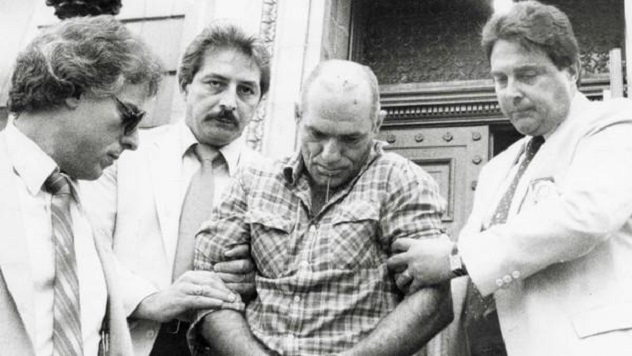
Andre Rand was a custodian at Willowbrook State School during the mid-1960s. The school became infamous because Geraldo Rivera made a documentary condemning the barbaric practices and treatment of nearly 6,000 children with mental disabilities. Rand worked there for a few years until being arrested for various crimes against children like sexual assault and kidnapping. After his initial arrest, he was in and out of prison for the next couple of years.
By 1987, due to public demand, the Willowbrook State School was shut down and the building was abandoned. Around the same time, urban legends started to emerge of Cropsey, an ax-wielding serial killer and escaped mental patient who lived in the tunnels in the basement.
The terrifying thing was that Cropsey turned out to be real. Well, sort of. On June 9, 1987, 12-year-old Jennifer Schweiger—who was born with Down syndrome—went missing. Thirty-five days later, her body was found buried on the school property near Rand’s camp.
He was arrested and charged using largely circumstantial evidence. One of the most damning things against Rand was the crazed look on his face and his constant drooling as he was being led away by police in handcuffs. The picture—taken by Tony Carannante—made Rand look like a monster who was absolutely capable of committing the horrible crime.
After his arrest, four other murders—including those of two five-year-olds—were also attributed to Rand. However, he was only convicted of murdering Schweiger and a girl named Holly Ann Hughes who went missing in 1981. Her body, like the three other alleged victims, was never found. In fact, there are some people who believe that Rand is innocent of the murders, as he was only convicted on circumstantial evidence.
7Karla Homolka’s Black Eyes

Paul Bernardo and Karla Homolka are two of the most infamous killers in the history of Canada. Bernardo started off his brutal trail of terror by raping at least a dozen women. He eventually married Karla Homolka, who ended up being his accomplice in three brutal rapes and murders including Homolka’s own younger sister Tammy.
The shocking crimes made headlines across the world. However, one picture that resonated with many people—both then and now—is the picture of Homolka with shockingly black eyes. The pictures were taken as evidence when she pressed charges against Bernardo for assault. The result was that both police and public believed that Homolka was a victim of Bernardo. The pictures eventually led to her being given a plea deal where she would only receive 12 years in prison.
The pictures were a result of an incident that happened on December 27, 1992. An unhinged Bernardo beat Homolka so badly with a flashlight that she told people she was in a car accident. Her family came to rescue her and they eventually got her away from Bernardo, which was a key in his downfall and conviction.
Sadly, it was revealed after the trial that Homolka was actually much more involved in the killings than she let on. She was released in 2005 and is living in the French Caribbean with her husband and three children.
6Ted Bundy Exposes The Monster Within
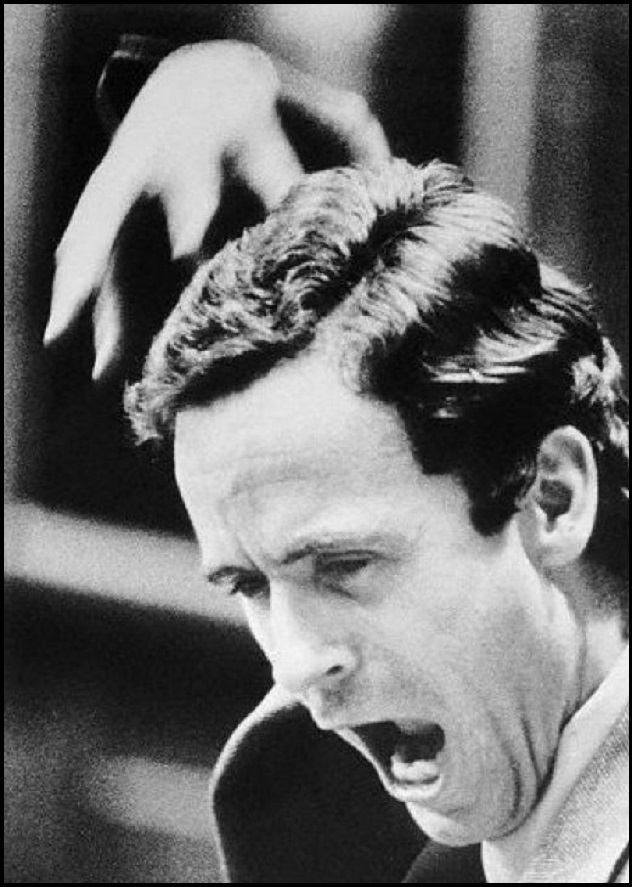
Ted Bundy is one of the most famous and prolific serial killers of all time. He is well known for being a smart and good-looking man who was hiding a terrifying monster just below the surface. At the time of his trials, a lot of people had a hard time wrapping their head around how someone who looked and acted like Bundy could commit such horrible crimes. Even the judge who sentenced Bundy thought he was a bright young man who, at some point in his life, went completely off the tracks.
One picture that managed to capture the essence of the rage of Bundy is the picture above, taken by photographer Bill Frakes of the Miami Herald. It was in Orlando during the murder trial of 12-year-old Kimberley Leach who was Bundy’s last victim. Bundy kidnapped her from her school in Lake City, Florida, and her body was found weeks later.
This was Bundy’s second trial, and he had already received a death sentence for the murder of two sorority girls. During this trial—unlike before—Bundy chose not to be his own attorney. By that point, he was having problems keeping up his cool and calm demeanor. The picture was taken when Bundy was trying to leave the courtroom but was stopped by court officials. It was one of the few times that the outwardly charming Bundy publicly lost his temper. It gave a small yet terrifying glimpse into what Bundy’s 30-plus victims saw.
5The Shooting Of William Jay Gaynor
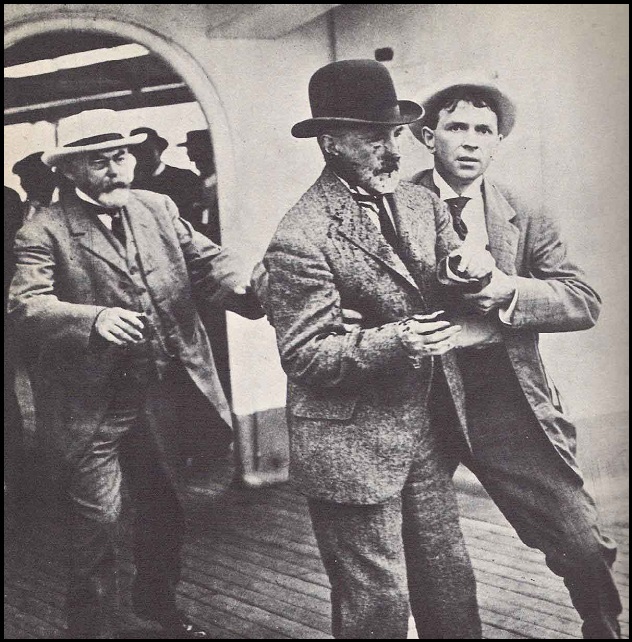
Photographer William Warnecke from the New York World was running late on August 9, 1910. He was supposed to take pictures of Mayor William Jay Gaynor as he boarded a ship for a month-long vacation in Europe. A reporter from the World had already interviewed Gaynor and by the time Warnecke made it to the port, all the other photographers had left. Nevertheless, Warnecke set up his camera and began taking pictures of the mayor as he talked to a few of his aides before boarding the ship.
Suddenly, Mayor Gaynor was approached by John J. Gallagher who yelled, “You took the bread and meat out of my mouth!” He then fired his revolver several times, striking the mayor in the throat. William H. Edwards, the city’s sanitation commissioner, was also struck in the arm.
Gallagher had recently been fired from his job as a night watchman. He had written to the mayor many times about this and tried to approach him as well, but his attempts were fruitless. Gaynor miraculously survived the shooting and even planned to run for reelection three years later. On September 10, 1913, he boarded another ship—again heading for Europe—when he had a heart attack on the sixth day into the trip. Gallagher, his would-be murderer, died in a state mental hospital the same year.
4The Lynching Of Thomas Shipp & Abram Smith

Few pictures encapsulated the feeling of terror many African Americans had living in the American South more than the above picture of a public lynching. The picture was taken by Lawrence Beitler, a commercial photographer whose studio was a block away from the Grant County Square in Marion, Indiana, where the lynching occurred.
The two dead men are 18-year-old Thomas Shipp and 19-year-old Abram Smith. They had been arrested the night before, along with 16-year-old James Cameron. The trio had been driving along the river when they came upon 24-year-old Claude Deeter and 18-year-old Mary Bell. Cameron says that Shipp and Smith wanted him to rob the couple and handed him a gun. When Cameron realized he knew the couple, he walked away from the scene. He then claimed he heard gunshots a short time later. The trio was arrested that night for the murder of Deeter and the rape of Bell.
The day after the murders and arrests, a group of thousands surrounded the jail. Things escalated by the time the evening rolled around, and they were ready to lynch the three men. Using sledgehammers, groups of people broke into the prison and dragged out Smith and Shipp first. They were beaten and strung up—when Smith tried to climb up the rope, members of the lynch mob broke his arms.
Amazingly, as Cameron was about to be strung up as well, someone in the crowd yelled that he was innocent. Miraculously, the crowd let him go. This made Cameron the only known person to survive a lynching. He would go on to open three chapters of the NAACP as well as the Black Holocaust Museum.
After taking the picture of the lynching, Beitler printed postcard versions of the photo for days and nights afterward. Within days, he had sold thousands. There were two versions of the picture that were printed. One was cropped and didn’t show much of the crowd, while the second showed a large group of people actually smiling while standing in front of the gory scene.
While it was used as a source of pride for people in the South, it shocked people outside the culture. It was the first time many people actually witnessed the terrible racial violence that was happening in their own country.
3Etan Patz’s Milk Carton Photo
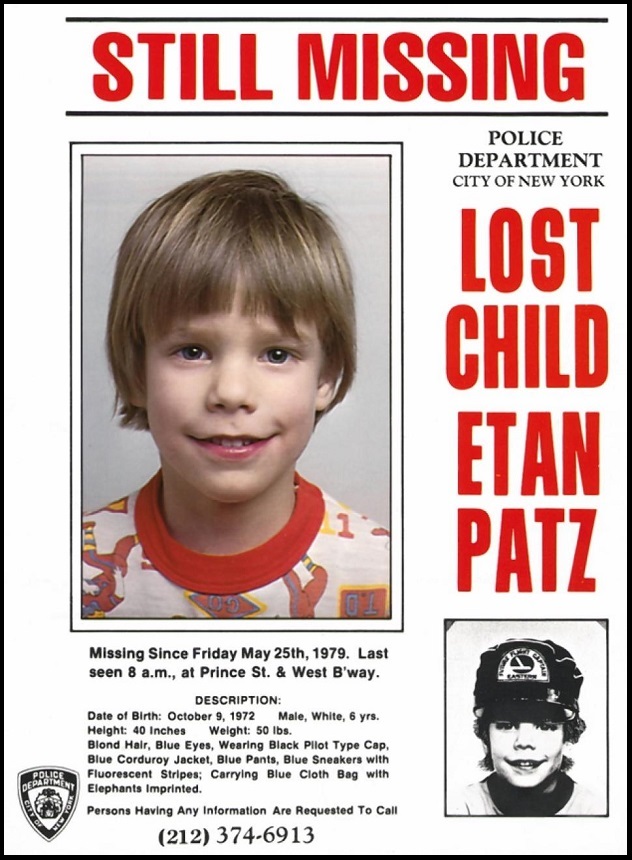
One of the most famous pictures attached to any crime is that of six-year-old Etan Patz. The young boy went missing on May 25, 1979. This was the first day he was allowed to walk to the bus alone to get to school. Sadly, his body has never been found.
Besides being a victim of a tragic crime, Etan was also famous for being one of the first people to be featured on the side of a milk carton in a national campaign. The idea of using milk cartons for pictures of missing children came from Anderson Erickson Dairy in Iowa, after two local delivery boys went missing. The idea was picked up by a major milk carton manufacturer who pitched the idea to different dairies. The campaign was immediately popular despite only one American child being returned alive out of the 70 featured on various cartons.
Finally, in 2012, a man named Pedro Hernandez was charged with the murder of Etan Patz. Hernandez was working in a family-owned bodega near the area where Etan went missing. Over the years, he apparently confessed to some relatives who in turn told the police. When the police questioned Hernandez, he said that he lured the young boy by promising a can of pop if he followed him to his store. Once in the basement, Hernandez strangled Patz to death, put his backpack behind a freezer, and placed his body in a box before throwing him out in the trash.
Hernandez’s lawyer says that his client is innocent, mentally ill, and was forced into a confession. His trial is set to start January 5, 2015.
2Bonnie & Clyde Acting Silly
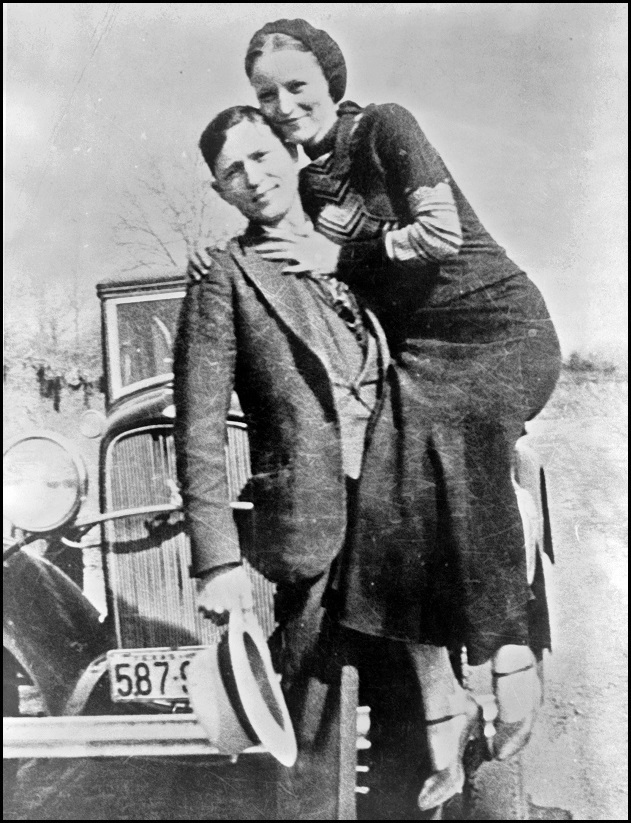
The most romanticized criminals in the history of the United States might well be the Barrow gang led by Clyde Barrow and his girlfriend Bonnie Parker. The pair’s crime spree is often glamorized as two rebels fighting against the system. In reality, their gang often stole from small stores and gas stations—in other words, they were stealing from poor people. On top of that, their gang murdered at least 13 people in cold blood.
So how did the myth of the two romantic outlaws grow? The infamous pictures of Bonnie and Clyde acting silly and playful probably didn’t hurt. For example, there are pictures of Bonnie smoking a cigar (although she claimed that she didn’t actually smoke), Bonnie pointing a rifle at Clyde’s chest, and Clyde lifting Bonnie off the ground. These are iconic pictures of the couple, but how did they get into circulation?
The story is that the police actually released them. They were found on an undeveloped roll of film in one of the former hideouts. The pictures were developed and released as police typically do with photos of wanted fugitives. Since there weren’t many pictures of the couple to begin with, the police were forced to use these ones.
However, when the pictures were released, they took on a whole new life. Bonnie and Clyde were looked at as wild young rebels in love. During a time when people were living in poverty because they followed the rules, the pictures struck a chord especially with young Americans.
1The St. Valentine’s Day Massacre

In 1929 Prohibition-era Chicago, there were two main gangs battling for control of the black market. The gangs were led by George “Bugs” Moran who ran the North Side gang, and Al “Scarface” Capone who ran the Chicago outfit. Moran had put a $50,000 contract on Capone, and Capone decided to make the first strike.
While hiding out in Florida for an alibi, Capone ordered the hit. At 10:30 in the morning on February 14, 1929, two men dressed as police officers and two men in suits entered Moran’s hideout at the SMC Cartage Company Garage. They found five members of the North Side gang and two other men in the garage and ordered them up against the wall. Once there, Capone’s men opened fire on the seven men with tommy guns and finished off two of the victims with shotguns. Interestingly, the only gang member who wasn’t killed was Moran, who slept in and wasn’t around the garage at the time.
The crime was shocking, and the pictures only made things worse. They were gruesome, bleak, and looked like photos that the police would have taken for evidence rather than something that would appear on the front page of a newspaper.
The pictures were taken by Tony Berardi, a photographer from the Chicago American. Berardi climbed on the roof of a car in the garage and snapped the infamous pictures. He had followed the police there and, amazingly, the police let him take the pictures. When more photographers showed up though, the police shut down the photo shoot.
The massacre proved to be the downfall for both Moran and Capone. Prominent citizens who were once willing to turn a blind eye to Capone’s activities were shocked at the level of violence depicted in these grisly pictures. Moran simply could not recoup the manpower, while Capone was arrested for tax evasion.
Robert Grimminck is a Canadian crime-fiction writer. You can follow him on Facebook, on Twitter, or you can visit his website.
![10 Creepiest Photos Of Victims Taken By Serial Killers [DISTURBING] 10 Creepiest Photos Of Victims Taken By Serial Killers [DISTURBING]](https://listverse.com/wp-content/uploads/2018/09/Regina-Kay-Walters-featured-2-150x150.jpg)
